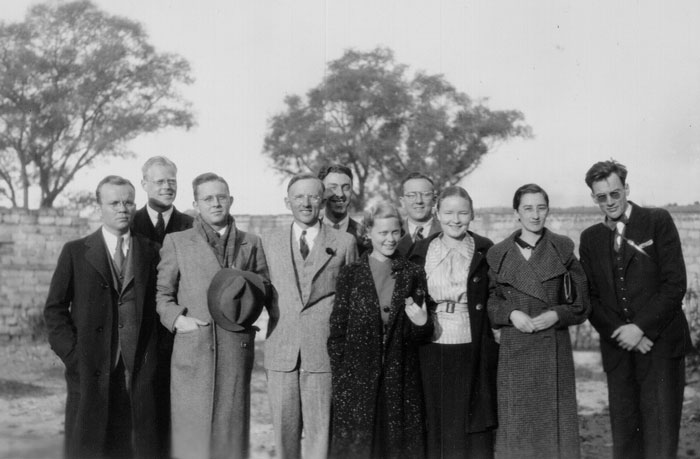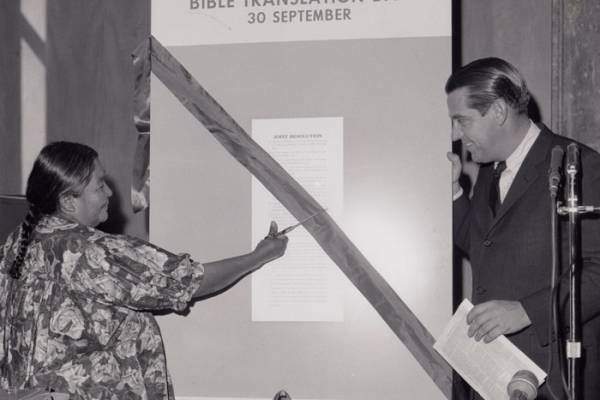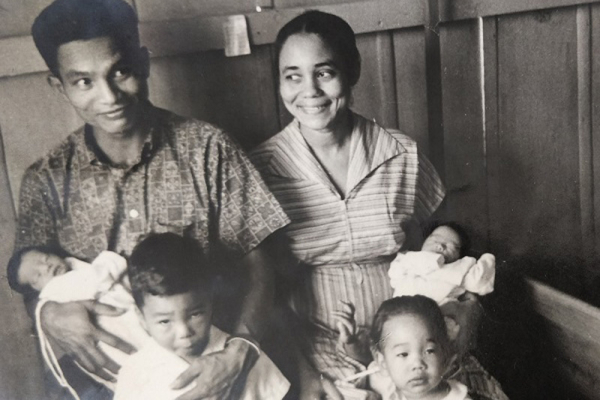The Entrance to Mexico

An educator from Mexico, Dr. Moisés Sáenz was instrumental in the life and vision of Cameron Townsend. Dr. Sáenz studied remote people groups extensively in his own country and came to Guatemala to see what was happening there. As Cam had experienced, local language speakers were looked down upon by many Spanish speakers — viewed as inferior because of their minority languages and heritage.
Cam shared his belief with Dr. Sáenz that the mother tongue was key to local education. If the people could learn how to read and write their language, they could take pride in their heritage. And if they were given a Bible in their own language, they would be able to recognize their eternal value and worth too. When that happened, minority people groups would be able to participate in the Spanish-speaking world as equals.
After hearing Cam’s views, Dr. Sáenz invited Cam to come down to Mexico and work there. Several weeks later, Cam received a letter that repeated the invitation. He filed it away, keeping it in mind for another day.
That day came around two years later, on Nov. 11, 1933, when Cam and L.L. Legters were traveling to Mexico. Legters had visited Cam and told him about his recent trip to the country. There he’d learned of at least 50 minority people groups without the Bible, and some were very large. Cam and Legters went to Mexico to get permission for Bible translation work among the local people.
But the Mexican immigration officer refused to let them enter, and they sat in the waiting room for a long time, wondering whether God was going to break through this particular roadblock. Cam and Legters prayed, sang and prayed again while waiting for an answer from the officials.
It was then that Cam remembered his letter from Dr. Sáenz. He retrieved it from his battered briefcase and presented it to the immigration officials. They knew of Dr. Sáenz, the father of Mexico’s high school system; his brother was the head mayor of the federal district of Mexico City, an important political figure. The letter couldn’t be ignored.

It was agreed that Cam and Legters could enter the country under the stipulation that if Legters preached or Cam tried to study the local languages, they would be fined and expelled from the country immediately.
That evening at their hotel, Cam and Legters turned to the Scriptures for encouragement. In their devotional reading for Nov. 11, they encountered Exodus 23:20, “See, I am sending an angel before you to protect you on your journey and lead you safely to the place I have prepared for you” (NLT). Both felt like God was speaking to them through this verse, showing them that He would make a way for their entry to Mexico to do His work.
They learned that Dr. Sáenz was lecturing at the University of Chicago. Unfortunately, without him in the country, Cam had no official friend who could help.
Despite this setback, Cam was confident that God was with them and would continue to create a way for them to begin work in Mexico. Legters, however, grew impatient with sitting around; he wanted to preach. In time, Cam and Legters were connected with Rafael Ramírez, the director of rural education in Mexico. When the men introduced themselves, Ramírez had already heard about them. They were the men who wanted to translate the Bible for the minority people groups.
Ramírez didn’t want that, though, believing that the local people already had too much religion. Cam shared that the Bible in their own language would teach them morality and good citizenship. Ramírez was skeptical, stating that Cam couldn’t bring in translators for the people. And even if he did, the government wouldn’t allow the Bible to be distributed.
That’s when Ramírez noticed a book Cam was carrying by Dr. Frank Tannenbaum, a professor from Columbia University who was well‑liked by Mexican educators. It was seeing this book that softened Ramírez to Cam’s request. He wrote a letter authorizing Cam and Legters access to Mexico to study the rural education system, but not the minority languages. With that, the door to Mexico opened a bit wider.

Ultimately, Cam’s research of the Mexican education system and articles he wrote opened the door to work in Mexico even further. It was through this that they decided to enter Mexico as linguists rather than missionaries.
Prayer helped Cam Townsend get God’s Word to the people of Mexico; your prayers can open doors for translations that still need to start.






